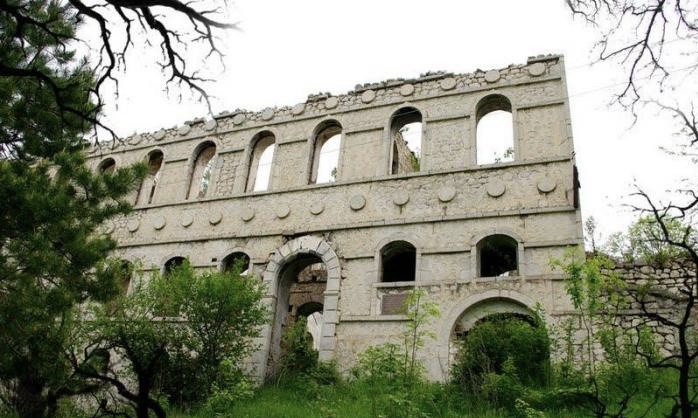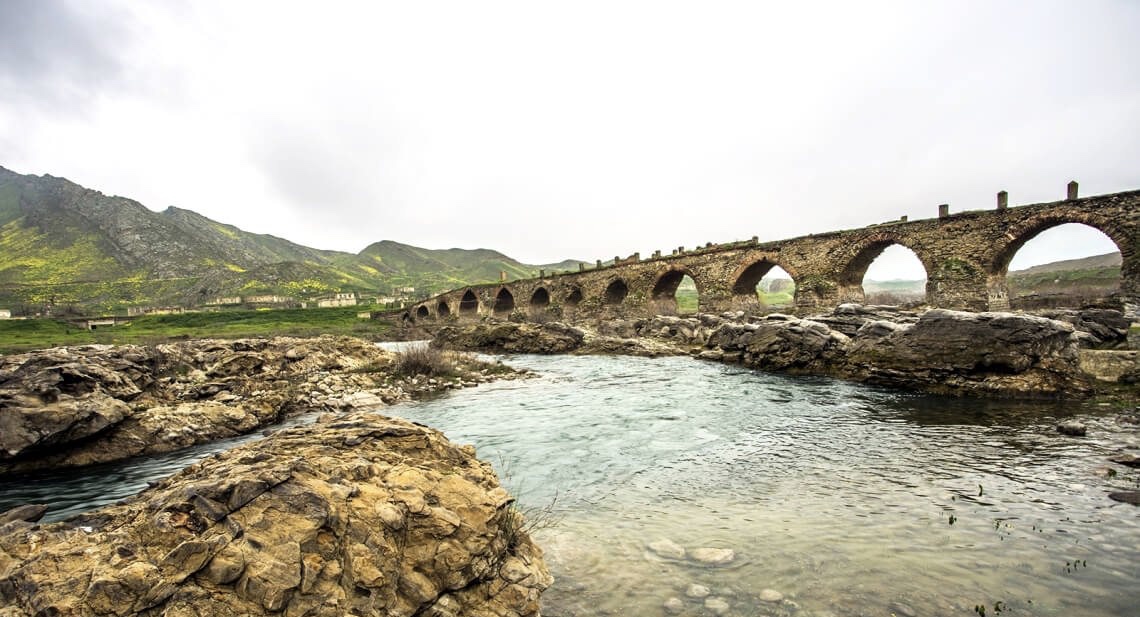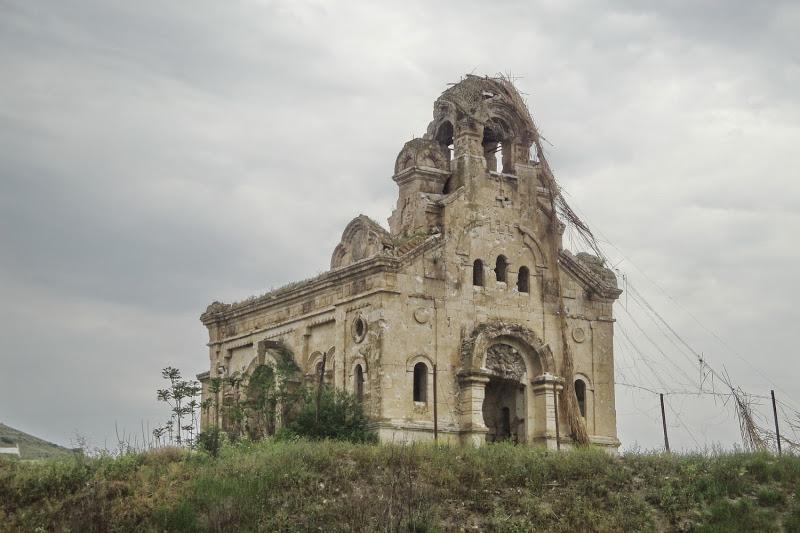






of







of







of





















The idea of establishing Aghdam Bread Museum, which is considered to be the second in the world after the Zurich Bread Museum that established in 1940 in Germany and the first one of a kind in the former USSR, belongs to Sadig Murtuzayev who held the post of first secretary of party committee of the Aghdam city in 1982. That year the repairing-restoration began in the mill and was completed in the next year and on 25th of November in 1983 the museum received its first visitors.
The museum itself has an interesting history. Thus, there was an old ruined mill at the city center. As the mill was the sole source of bread during the hard years of war, it was revered as a holy place, and the damage of the mill was unacceptable. Later, it was welcomed the idea of establishing Aghdam Bread Museum in the place of the mill. Famous selectionist scientist, academician Imam Mustafayev enriched the Museum pieces by his personal grain collection. Bread samples of about one hundred peoples were obtained. A Russian woman who had been a survivor of the Leningrad Blockade gave to the Museum her carbonized piece of bread weighed one hundred and fifty grams, which she kept and did not eat even on the verge of death. Bread samples from the cosmonaut camp were also sent to the Museum. About two thousand-grain samples were soon collected in the Museum.
The mill where Bread Museum was situated was built at the end of XIX century by Mohammed Garayev who was from the well-known stock of the city. The mill was preserved by the state as a local cultural monument. The inn also included to the complex. During the Soviet period the inn situated in the territory named as “The Yard of Mill” was adapted for dwelling and given to the inhabitants.
In 1987 the mill was brought to everyday use. The arrangement of the Museum was carried out by the group headed by Eduard Krupkin, an expert of the Department for the Artistic Arrangement affiliated with the Ministry of Culture. The delegation was led by the head of the Department of Museums Sariyya Ismayilova.
The Museum consisted of three sections. The entry opened straightly to the summer hall. In the middle of the hall a part of which was covered, there was a small fountain. Through the summer hall it was possible to pass to the café of “Sunbul”, to the kitchen and two small dining rooms.
While entering the hall by turning to the left side you could enter to the exhibition salon. The Museum had the second entry, too. This entry led to the room of directory. The exhibition salon was high, that was why some part of it was parted to up and down parts. By going up from the left side of the entry door in the entresol part there was a 20 square-meters administrative room and foyer. Through the up of that space there was an entry to the garret of the Museum. In the garret there were kept additional exhibits of the Museum.
The size of the first exhibition hall was 80 square-meters and the size of the second hall was 30 square-meters. In the first hall there was also a mechanical mill to be able to grind eight to ten tons of wheat in a day. There was also exhibited a cleaning device named as “Triyer” which was used during the 30th years of the last century.
The second exhibition hall was also rich in the interesting exhibits. There were also demonstrated labor tools-wooden plough, threshing board, toothed sickle, reaping hook, hand-mill concerning to II century, and thresher named as “charchar”. It was possible to go up to the second storey using wooden stairs on the right side of the mill. There were exhibited productions made of flour including the sorts of bread cooked in Ganja, Nakhchivan, Qarabagh, Georgia, Armenia, Dagestan and Samarkand.
Except all these, in the lower hall there were demonstrated old big pitchers and home-items. The next hall was devoted to manufacture of grain and agriculture. There were exhibited different sorts of wheat, the exhibits made of wheat, the bread cards given to the children during the World War II, including the map of Azerbaijan made of wheat.
A miller was on the staff too. The main purpose was to keep the mill to be in use for to present the visitors ready production.
The oldest exhibits of the Museum were the stoned wheat-ears belonging to the VII century BC. The wheat-ears were presented to the Museum by academic Imam Mustafayev, but the wheat-ears were found out on the hill of Chalaghan in the territory of the village of Afatli of the city of Aghdam. The wheat-ears were found out by the famous archaeologist, an associate member of the ANAS (Azerbaijan Academy of Sciences), professor Ideal Narimanov. Afterwards only the stoned wheat-ears were taken and presented to the Azerbaijan History Museum by Chimnaz Aliyeva who headed the Department of Culture of the town.
As a result of the attacks of the Armenian Armed Forces projectiles had fallen two times on the building of the Museum. The first projectile had fallen into the third exhibit hall, but it didn’t explode. But the second projectile fallen on the Museum on 12th in August of 1992 at 16:40 had hit the mark. Zahid Valiyev who worked as chief investigator at the Prosecutors Office of the towns on Karabakh notes in the materials of the criminal case numbered 64525 that on 12th August in 1992 the city of Aghdam was attacked by rockets and fire-guns from the direction of the villages of Khanabad and Nakhchivanik of the town of Asgaran, as a result one of the rockets fell on Bread Museum. Just that projectile put an end to the existence of the Museum. Though they made efforts to put out the fire it was impossible to escape the Museum. About 1500 exhibits burnt and turned to ashes.

Qaragol Interrepublics State Reserve was set up with the decision of the Council of Ministers dated November17, 1987. Garagol State …

The idea of establishing Aghdam Bread Museum, which is considered to be the second in the world after the Zurich …

The Khurshudbanu Natavan’s House is a historical and architectural monument of the 18th century located in the city of Shusha. …

Museum Mausoleum Complex of Molla Panah Vagif is located in Shusha, Azerbaijan. It was built in honor of Molla Panah …

The Bridge belongs to the Arran architecture school. The first written source that mentioned the 15-arched Khudafarin Bridge belongs to …

Garghabazar Caravanserai was built in 1681 at the hillside, in the center of Garghabazar village of Fuzuli district, 8 km …

Armenia’s vandalism in Nagorno-Karabakh and seven surrounding regions affected not only the historical, cultural, and religious heritage of Islam but …

Jabrayil History-Ethnography Museum has been operating since 1953. Archaeological and ethnographic materials belonging to the history of the region, textiles, …

Khudavang, or Dedeveng, Monastery Complex is located in the Vang village of Kalbajar District, on the left bank of Tartar …

“The 19th century Aghdam Juma Mosque is perhaps the only structure that has withstood the years of neglect since the …